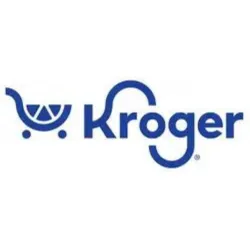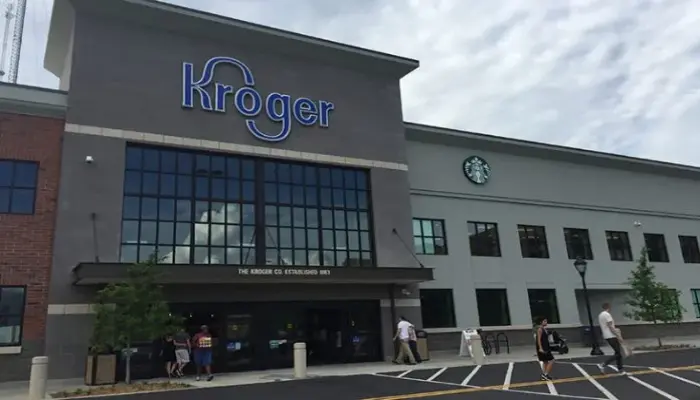Kroger, founded in 1883 by Bernard Kroger, is an American retail company that has grown to become one of the largest supermarket chains in the world. With its headquarters in Cincinnati, Ohio, Kroger operates thousands of stores across the United States, offering a wide range of products, including groceries, household items, and pharmaceuticals.
Kroger holds a pivotal position in the retail industry, acting as a cornerstone for consumer goods distribution. Its extensive reach and diverse product offerings contribute significantly to the competitive landscape, influencing market trends and consumer behavior.
The focus of this article is on exploring the characteristics, impact, and significance of the world’s largest Kroger store, delving into its history, features, and contributions to the retail sector.
History of Kroger
Bernard Kroger’s vision for a one-stop shopping destination began with the opening of the first store in Cincinnati. The concept of providing quality products at affordable prices laid the foundation for Kroger’s success.
Evolution and Growth Over the Years
Kroger’s journey involves constant evolution, adapting to changing consumer needs and market dynamics. From its humble beginnings, the company expanded through strategic acquisitions, mergers, and innovations.
Key Milestones in Kroger’s History
Highlighting pivotal moments such as the introduction of self-service shopping, the implementation of technology, and the acquisition of other supermarket chains, this section illustrates Kroger’s historical significance.
The Kroger Brand
Kroger’s brand identity encompasses more than just a supermarket chain; it represents reliability, affordability, and a commitment to customer satisfaction.
Various Subsidiaries and Banners Under Kroger
Exploring the diverse subsidiaries and banners within the Kroger family, including Fred Meyer, Ralphs, and Harris Teeter, showcases the brand’s extensive influence across different regions and demographics.
Kroger’s Position in the Market
Examining Kroger’s market share, customer loyalty, and competition provides insight into its standing within the retail industry and its ongoing efforts to maintain a strong market presence.
Importance of Kroger Stores
As a major player in the retail sector, Kroger serves as a linchpin for consumer goods distribution, influencing supply chains, pricing, and product availability.
Impact on Local Economies
Kroger stores contribute significantly to local economies by providing job opportunities, supporting local suppliers, and generating tax revenue for municipalities.
Kroger’s Contribution to the Community
Detailing Kroger’s philanthropic initiatives, community outreach programs, and partnerships demonstrates the company’s commitment to social responsibility.
Analyzing the layout and design of Kroger stores, including considerations for customer convenience, aisle organization, and the integration of technology, highlights the company’s commitment to a positive shopping experience.
Range of Products and Services
From fresh produce to in-house brands and pharmacy services, Kroger’s diverse product offerings cater to a wide range of customer needs. This section explores the depth and breadth of its inventory.
Unique Offerings and Promotions
Examining Kroger’s unique promotions, loyalty programs, and exclusive partnerships sheds light on the company’s marketing strategies to attract and retain customers.
World’s Largest Kroger – A Closer Look
Definition of “Largest”
Defining “largest” in the context of Kroger involves considering various parameters such as physical size, revenue, and customer base.
Identification of the World’s Largest Kroger
Unveiling the specific location and characteristics of the world’s largest Kroger store showcases the pinnacle of the company’s achievements.
Comparison with Other Kroger Locations
Analyzing how the largest Kroger compares to other locations in terms of size, revenue, and customer engagement provides a comprehensive perspective on its significance.
A. Size and Scale
Physical Dimensions of the Largest Kroger
Exploring the square footage, layout, and architectural design of the largest Kroger store provides insights into its physical scale.
Comparison with Other Kroger Outlets
Contrasting the size of the largest Kroger with other outlets illustrates the exceptional nature of this particular location.
Significance of Its Size
Understanding the implications and advantages of having the largest Kroger store contributes to the broader discussion on the company’s strategy.
B. Revenue and Sales
Financial Performance of the Largest Kroger
Analyzing the financial data, profit margins, and sales figures of the largest Kroger highlights its economic impact and success.
Analysis of Sales Data
Delving into the specifics of product categories, seasonal trends, and consumer preferences helps decipher the factors driving sales at the largest Kroger.
Impact on Kroger’s Overall Financial Health
Assessing how the largest Kroger contributes to the overall financial health of the company underscores its strategic importance.
C. Customer Base
Size and Diversity of the Customer Base
Exploring the demographics, preferences, and loyalty of the customer base at the largest Kroger provides insights into its market reach.
Customer Satisfaction and Loyalty
Analyzing customer feedback, reviews, and loyalty program participation helps gauge the level of satisfaction among patrons.
Strategies for Attracting and Retaining Customers
Examining the marketing, promotional, and customer service strategies implemented to attract and retain customers outlines best practices for the retail industry.
Location and Expansion
Geographical Location of the World’s Largest Kroger
Providing detailed information on the specific location of the largest Kroger, including the regional market it serves, enhances the understanding of its strategic placement.
Factors Influencing the Choice of Location
Examining the factors such as demographics, competition, and logistical considerations that influenced the decision to establish the largest Kroger at its chosen location provides valuable context.
Kroger’s Expansion Strategy and Future Plans
Outlining Kroger’s overall expansion strategy and future plans, including potential developments and new locations, sheds light on the company’s vision for growth.
Technology and Innovation
Integration of Technology in the Largest Kroger
Exploring how technology is incorporated into the largest Kroger store, from automated checkout systems to online ordering, demonstrates the company’s commitment to innovation.
Innovative Features and Services
Highlighting specific innovations, such as personalized shopping experiences, digital promotions, and sustainability initiatives, showcases Kroger’s forward-thinking approach.
Impact on Customer Experience and Efficiency
Analyzing how technology and innovation enhance the overall customer experience and operational efficiency at the largest Kroger illustrates the company’s dedication to staying ahead in a rapidly evolving retail landscape.
Challenges and Solutions
Challenges Faced by Kroger in Maintaining the Largest Store
Identifying and discussing challenges, whether logistical, operational, or market-related, provides a realistic view of the complexities involved in managing the largest Kroger.
Solutions and Strategies Implemented
Detailing the proactive measures, strategic adjustments, and innovative solutions Kroger employed to overcome challenges showcases the company’s resilience and adaptability.
Lessons Learned and Best Practices
Reflecting on the lessons learned from overcoming challenges and identifying best practices contributes to the broader conversation on effective retail management.
Community Engagement
Kroger’s Role in the Local Community
Exploring Kroger’s involvement in local events, partnerships with community organizations, and support for charitable causes highlights the company’s commitment to being a responsible corporate citizen.
Initiatives and Programs Supporting Community Development
Showcasing specific initiatives, such as job training programs, local sourcing, and educational partnerships, illustrates Kroger’s contribution to community development.
Social Responsibility and Sustainability Efforts
Detailing Kroger’s initiatives related to environmental sustainability, waste reduction, and ethical sourcing underscores the company’s dedication to social responsibility.
Future Trends in Retail and Kroger’s Adaptation
Emerging Trends in the Retail Industry
Identifying and discussing current and future trends in the retail sector, including e-commerce, sustainable practices, and technology integration, provides context for Kroger’s strategic planning.
Kroger’s Response to Changing Consumer Behavior
Analyzing how Kroger adapts to shifts in consumer behavior, preferences, and expectations showcases the company’s ability to stay relevant in a dynamic market.
Predictions for the Future of Kroger Stores
Offering informed predictions on how Kroger may evolve in the future, including potential innovations and market strategies, contributes to the discourse on the future of retail.
Conclusion
Summarizing the key points discussed throughout the article emphasizes the significance of the world’s largest Kroger in the broader context of the retail industry.
Reflecting on how the largest Kroger has influenced the retail landscape, market trends, and consumer expectations underscores its lasting impact.
Concluding the article with insights into Kroger’s current standing, challenges, and opportunities provides a holistic perspective on the company’s role in the ever-evolving retail sector.

